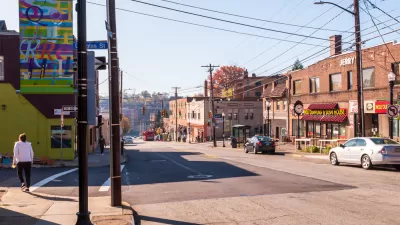Crime in urban areas is on the decline. Some attribute the drop to increases in the amount of people returning to city centers.
Though the crime rate remains high, actual incidences of violent crime have decreased in urban areas.
"Local governments have been flooded with bad news lately, but one pleasant yet puzzling surprise has been the ongoing drop in the nation's crime rate. The Federal Bureau of Investigation released its 2010 crime statistics, known as the Uniform Crime Report, which showed that despite the tough recession, the number of violent and property crimes committed dropped for the fourth year in a row. Those cities with 1 million or more residents saw violent crime drop 5.1 percent; cities with populations between 500,000 and 1 million experienced a 5.6 percent drop; and those between 250,000 and 499,999 saw the biggest drop in violent crime, 6.9 percent.
Typically crime rises during periods of high unemployment, such as the one we're going through now. So what's going on? Reasons for the contrary trend have crime experts baffled. Michael Maltz, a criminology professor at Ohio State University, told the Cleveland Plain Dealer that the drop in property crime (2.8 percent nationally) could be attributed to people becoming more security conscious, like keeping doors shut with better locks and putting more sophisticated alarms in their cars."
FULL STORY: Urban Areas Defy Crime Trends

Planetizen Federal Action Tracker
A weekly monitor of how Trump’s orders and actions are impacting planners and planning in America.

Maui's Vacation Rental Debate Turns Ugly
Verbal attacks, misinformation campaigns and fistfights plague a high-stakes debate to convert thousands of vacation rentals into long-term housing.

San Francisco Suspends Traffic Calming Amidst Record Deaths
Citing “a challenging fiscal landscape,” the city will cease the program on the heels of 42 traffic deaths, including 24 pedestrians.

Amtrak Rolls Out New Orleans to Alabama “Mardi Gras” Train
The new service will operate morning and evening departures between Mobile and New Orleans.

The Subversive Car-Free Guide to Trump's Great American Road Trip
Car-free ways to access Chicagoland’s best tourist attractions.

San Antonio and Austin are Fusing Into one Massive Megaregion
The region spanning the two central Texas cities is growing fast, posing challenges for local infrastructure and water supplies.
Urban Design for Planners 1: Software Tools
This six-course series explores essential urban design concepts using open source software and equips planners with the tools they need to participate fully in the urban design process.
Planning for Universal Design
Learn the tools for implementing Universal Design in planning regulations.
Heyer Gruel & Associates PA
JM Goldson LLC
Custer County Colorado
City of Camden Redevelopment Agency
City of Astoria
Transportation Research & Education Center (TREC) at Portland State University
Jefferson Parish Government
Camden Redevelopment Agency
City of Claremont



























